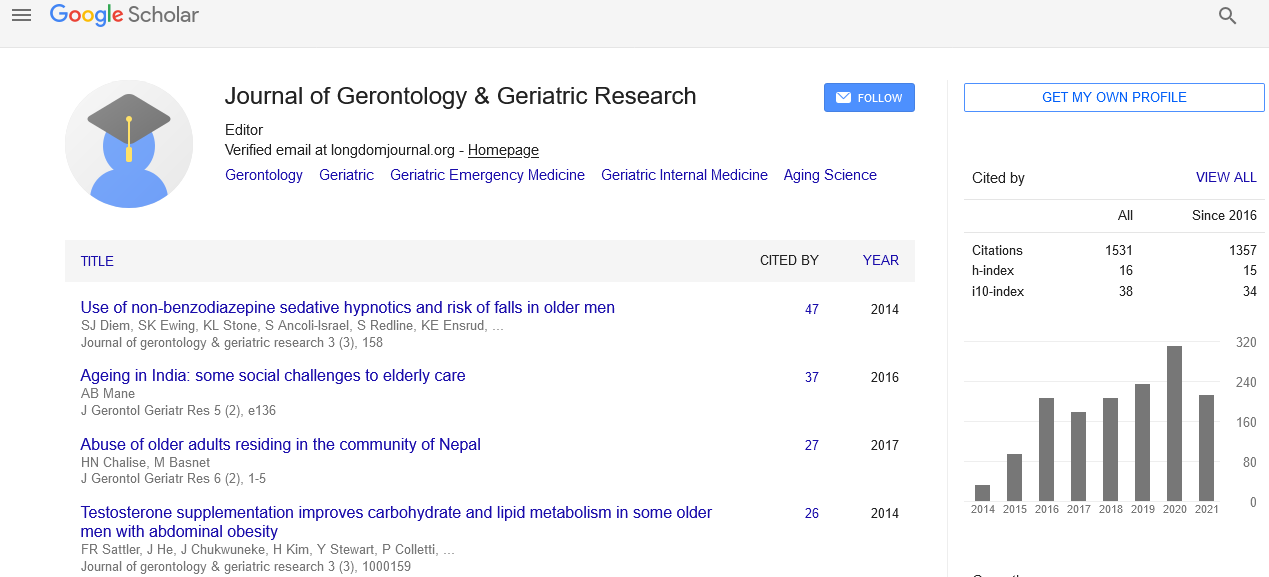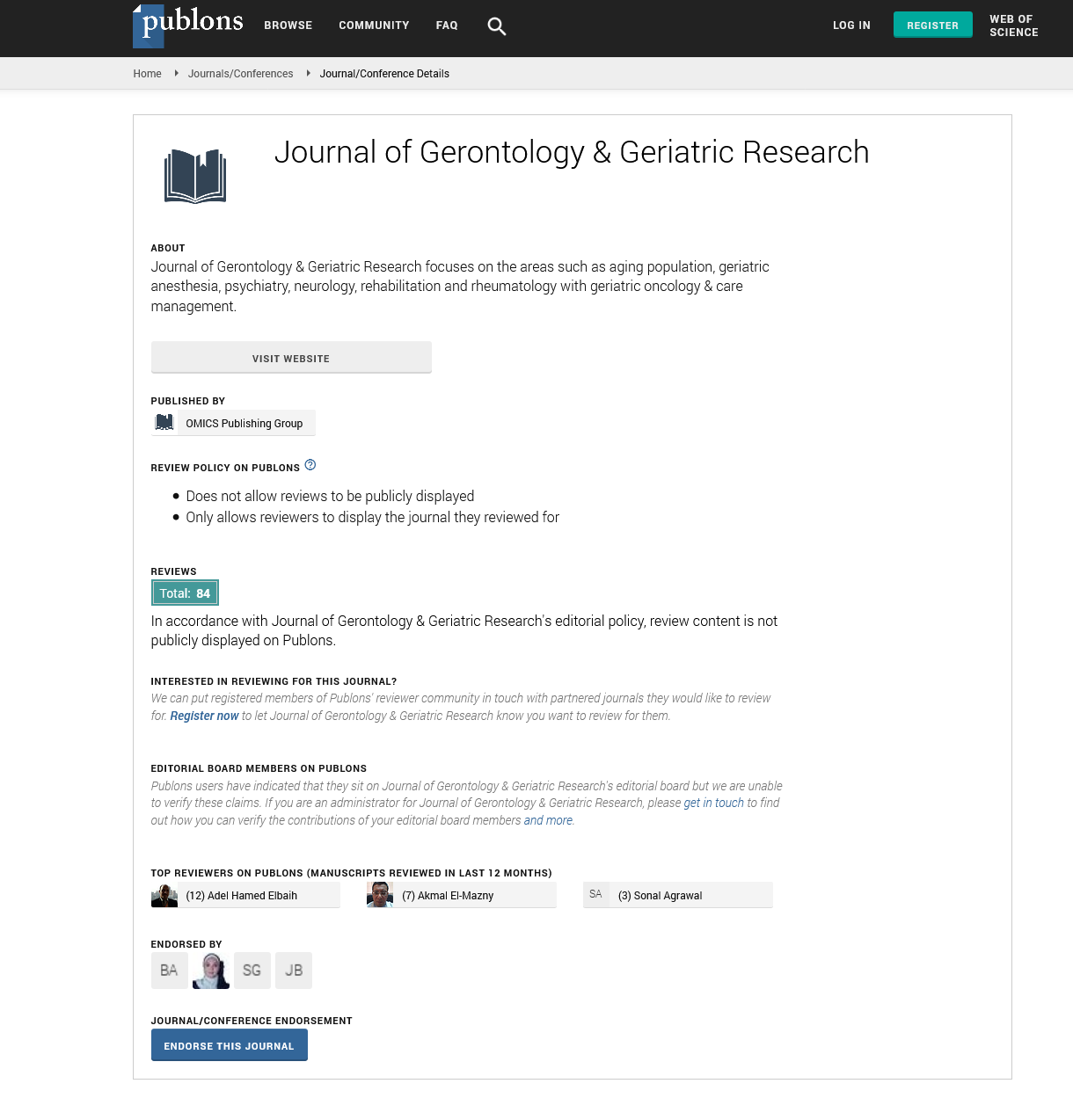PMC/PubMed Indexed Articles
Indexed In
- Open J Gate
- Genamics JournalSeek
- SafetyLit
- RefSeek
- Hamdard University
- EBSCO A-Z
- OCLC- WorldCat
- Publons
- Geneva Foundation for Medical Education and Research
- Euro Pub
- Google Scholar
Useful Links
Share This Page
Journal Flyer

Open Access Journals
- Agri and Aquaculture
- Biochemistry
- Bioinformatics & Systems Biology
- Business & Management
- Chemistry
- Clinical Sciences
- Engineering
- Food & Nutrition
- General Science
- Genetics & Molecular Biology
- Immunology & Microbiology
- Medical Sciences
- Neuroscience & Psychology
- Nursing & Health Care
- Pharmaceutical Sciences
AGING OF THE HEART IS ASSOCIATED WITH INSULIN RESISTANCE BY TELOMERE ATTRITION
2nd International Conference on Aging & Gerontology
June 26-27, 2017 San Diego, CA, USA
Ekaterina Plokhova, Akasheva, Tkacheva, Strazhesko, Dudinskaya, Kruglikova, Pykhtinaa & Boytsov
Federal State Institution, Russia
Posters & Accepted Abstracts: J Gerontol Geriatr Res
Abstract:
Background: Aging is associated with left ventricular (LV) Concentric Remodelling (CR). In patients with LV CR has been related to increased cardiovascular morbidity and mortality. Therefore, studies of mechanisms age-related LV remodelling to be of importance. An association between Insulin Resistance (IR) and LV CR has been found. Possible mechanisms underlying IR-induced age-related LV remodelling could be associated with decreased telomeres length. Leukocyte Telomere Length (LTL) has been regarded as a marker of replicative aging. Our hypothesis is that IR led to attrition telomeres and senescent phenotypes in the heart. Methods and results: We investigated 151 non-obese participants aged 60 to 85 years without history of CVD, hypertension, diabetes and regular drug medication. All the participants underwent standardized echocardiography using available system (iE33; Philips), had an oral glucose tolerance test. HOMA-IR was calculated as fasting insulin (mU/ml) x fasting glucose (mmol/l) (mmol/l)/22.5. IR was diagnosed in the case of HOMA-IR elevation >2.5 based on reference. LTL was measured by real-time quantitative polymerase chain reaction. HOMA-IR was significantly related to age (r=0.24, p<0.01) to compare to subjects without shorter telomeres. Individuals with IR did not significantly differ from those with normal HOMA-IR in the proportion of smokers, or levels of blood pressure and BMI. Conclusions: Our data demonstrated that aging is associated with a decrease LTL and LV diastolic dysfunction. Telomere attrition plays an important role in cardiac aging and may be associated with the development of age-associated diastolic dysfunction, a significant contributing factor in heart failure in humans.


